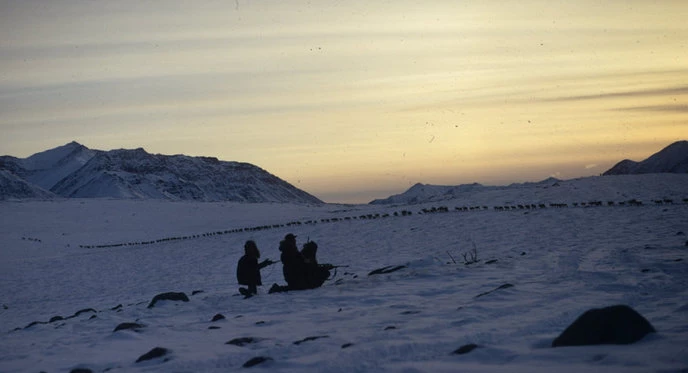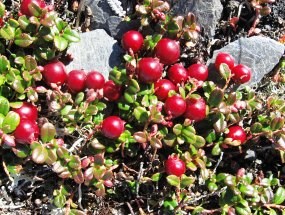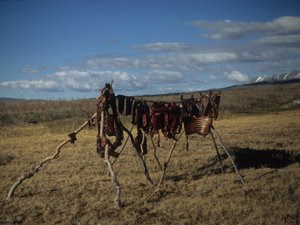|
Today, as in the past, many Alaskans live off the land, relying on fish, wildlife and other wild resources. Alaska's natural abundance forms the backbone of life and economy for many people in the state, and indigenous people in Alaska have used these subsistence resources for food, shelter, clothing, transportation, handicrafts and trade for thousands of years. Subsistence, and all it entails, is critical to sustaining the physical and spiritual culture of Alaska Native peoples and to making life on the land possible for many of Alaska's rural residents. Helga Eakon, the U.S. Fish and Wildlife Service Interagency Coordinator, describes the Alaska Native relationship to the land this way:

T. Weber Greiser First Alaskans When Europeans first visited Alaska's shores, all the people they met were engaged in subsistence lifeways. As the population grew through the territorial days, many new and conflicting demands were placed on Alaska's natural and cultural resources. Development of various kinds, like the harvest of marine and inland mammals, commercial fisheries, mining operations, agriculture, the development of military bases, and the establishment of cities and towns impacted local resources and subsistence activities. By the time Alaska gained statehood in 1959, subsistence patterns in some of Alaska's more populated areas were greatly diminished.
NPS photo by Penny Knuckles Subsistence Legislation In the years that followed, the pace of change accelerated and development abounded in Alaska's remote areas. In response, rural residents began to organize, and before long they petitioned government officials in hopes of retaining some protection for their land base and their subsistence way of life. In deliberations leading to the Alaska Native Claims Settlement Act of 1971, the U.S. Congress acknowledged the importance of subsistence hunting and fishing to Alaska Natives but provided no specific protection on federal public lands. In 1980, Congress formally recognized the social and cultural importance of protecting subsistence for both Native and non-Native rural residents when it passed the Alaska National Interest Lands Conservation Act (ANILCA). This legislation created millions of acres of new national park and national preserve lands in Alaska and helped to preserve subsistence use and a unique connection to the land fostered by tradition and lifelong experience. The new law defined subsistence as:
The Congress finds and declares that-

T. Weber Greiser Preserving Traditions In Gates of the Arctic National Park and Preserve nomadic peoples have used and occupied the area for thousands of years, following caribou herds and traveling to regional trading areas to meet with other Native groups. These peoples eventually formed three distinct cultures occupying the central Brooks Range in the 1800s: Athapaskan-speaking Koyukon, and Inupiaq-speaking Kuuvanmiit and Nunamiut. Today local rural residents in established communities and remote homesteads continue to depend upon resources in the park to sustain a subsistence way of life and maintain cultural traditions. Subsistence activities occur throughout the year and are usually concentrated in the northern and eastern portions of the park and along rivers flowing out of the mountains that connect low-lying communities. Winter trapping efforts concentrate on the harvest of lynx, wolverine, wolves, marten, and fox. Hunting, fishing, trapping, and gathering in repeated seasonal cycles remains a vital part of evolving subsistence lifeways and an unbroken link to the past for local residents in this region. Subsistence Resource Commission Subsistence Resource Commissions (SRCs) have been established for most national parks and monuments in Alaska to provide meaningful participation and involvement of local subsistence users in planning and management decisions. The purpose of the Commission is to recommend to the Governor of Alaska and the Secretary of the Interior a program for subsistence hunting within Gates of the Arctic National Park. Learn more about the Subsistence Resource Commission |
Last updated: July 28, 2016
